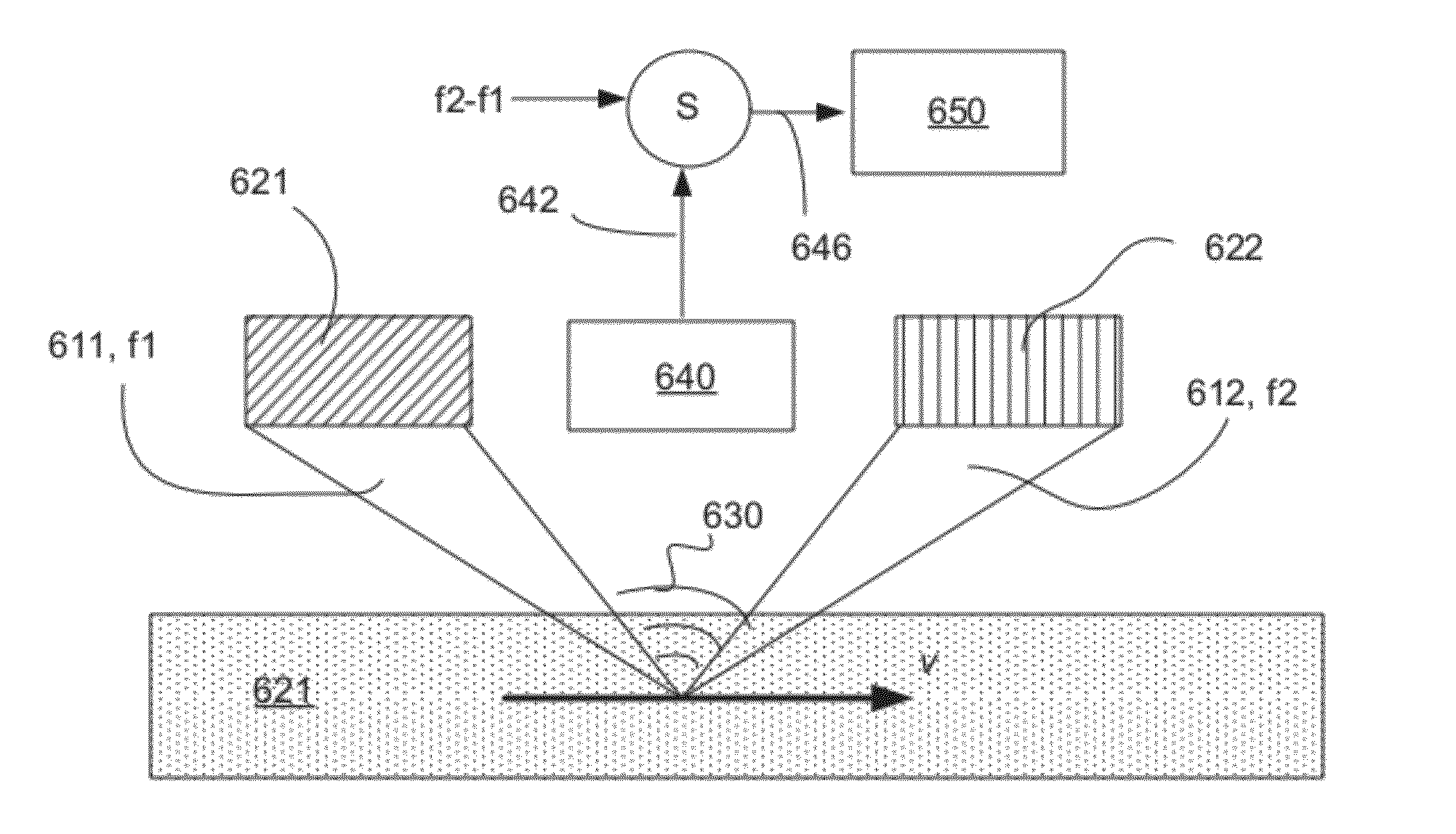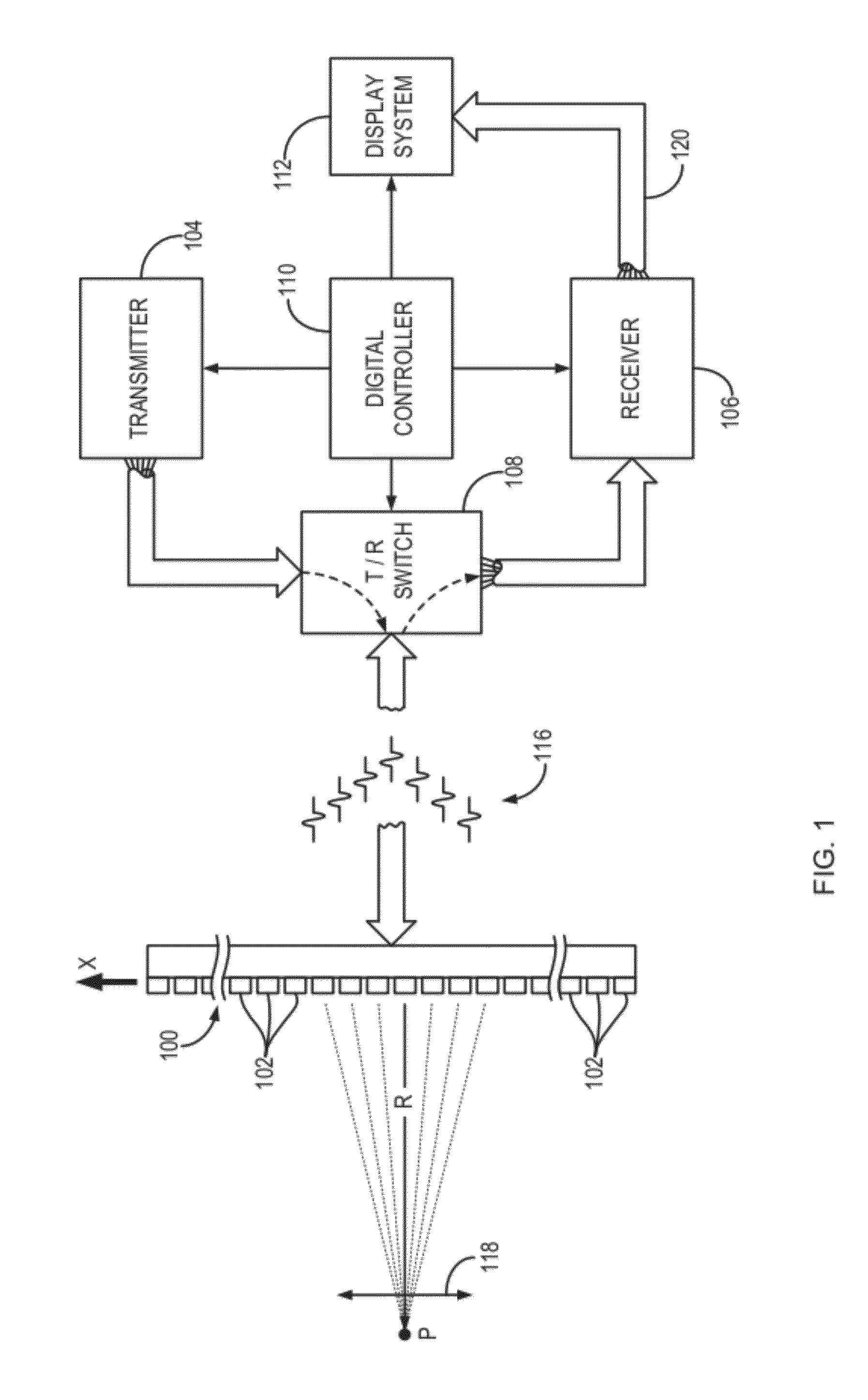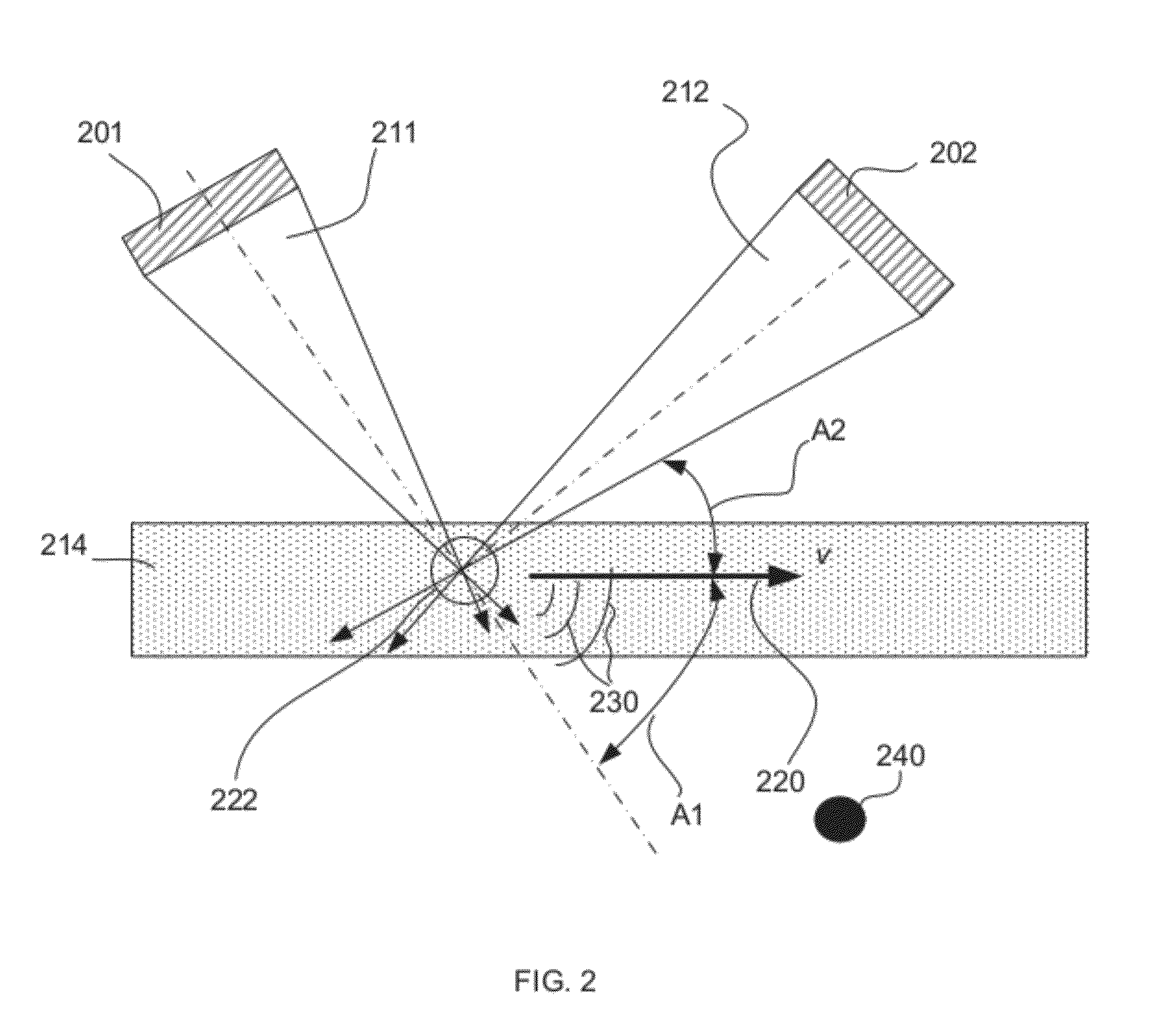Method and apparatus for multiple-wave doppler velocity meter
a velocity meter and multiple wave technology, applied in the field of multiple wave doppler velocity meter, can solve the problems of inability to achieve satisfactory spatial resolution, inability to measure the fastest blood flow deep in the heart, and inability to meet the requirements of spatial resolution
- Summary
- Abstract
- Description
- Claims
- Application Information
AI Technical Summary
Benefits of technology
Problems solved by technology
Method used
Image
Examples
embodiment 600
[0067]One of such modifications, an embodiment 600 that relates to the embodiment of FIG. 2, is described in reference to FIGS. 6(A, B) and in further reference to FIG. 2. As shown, two primary US waves 611, 612 (which are respectively generated by the sources 621, 622 at respectively-corresponding US frequencies f1 and f2≠f1 chosen such that the difference frequency, fΔ=f1−f2, is in the audible range) are focused at the ROI of the moving object 624. In this case, the response wave 630, generated by the moving object 621 in response to a non-linear interaction with the waves 611, 612 and received by a receiver 640, will have a frequency equal to fΔ+f′ (or fΔ−f′, depending on the direction of the flow). In a specific embodiment employing a transducer as a source of the US wave, the same transducer device may operate as a source of irradiating waves and a receiver of the response wave. FIG. 6B shows a frequency spectrum of such a response wave. The frequency component fΔis still prese...
embodiment 900
[0071]Yet another embodiment (not shown) can include - by analogy with the embodiment 900 of FIGS. 9A, 9B—three pairs of transducers respectively positioned along x, y, and z axes and operably cooperated to impinge correspondingly generated US waves onto the same ROI. Such embodiment is adapted to measure a velocity vector of the moving object in a 3D-space.
[0072]Additionally or alternatively, although some aspects of a method of the invention have been described with reference to a flowchart, those skilled in the art should readily appreciate that functions, operations, decisions, etc. of all or a portion of each block, or a combination of blocks, of the flowchart may be combined, separated into separate operations or performed in other orders. In addition, although a particular ultrasound-related embodiment of the invention and a method of detecting of the object's motion and characterizing the object's velocity have been described, the disclosed method and structure may be approp...
PUM
 Login to View More
Login to View More Abstract
Description
Claims
Application Information
 Login to View More
Login to View More - R&D
- Intellectual Property
- Life Sciences
- Materials
- Tech Scout
- Unparalleled Data Quality
- Higher Quality Content
- 60% Fewer Hallucinations
Browse by: Latest US Patents, China's latest patents, Technical Efficacy Thesaurus, Application Domain, Technology Topic, Popular Technical Reports.
© 2025 PatSnap. All rights reserved.Legal|Privacy policy|Modern Slavery Act Transparency Statement|Sitemap|About US| Contact US: help@patsnap.com



